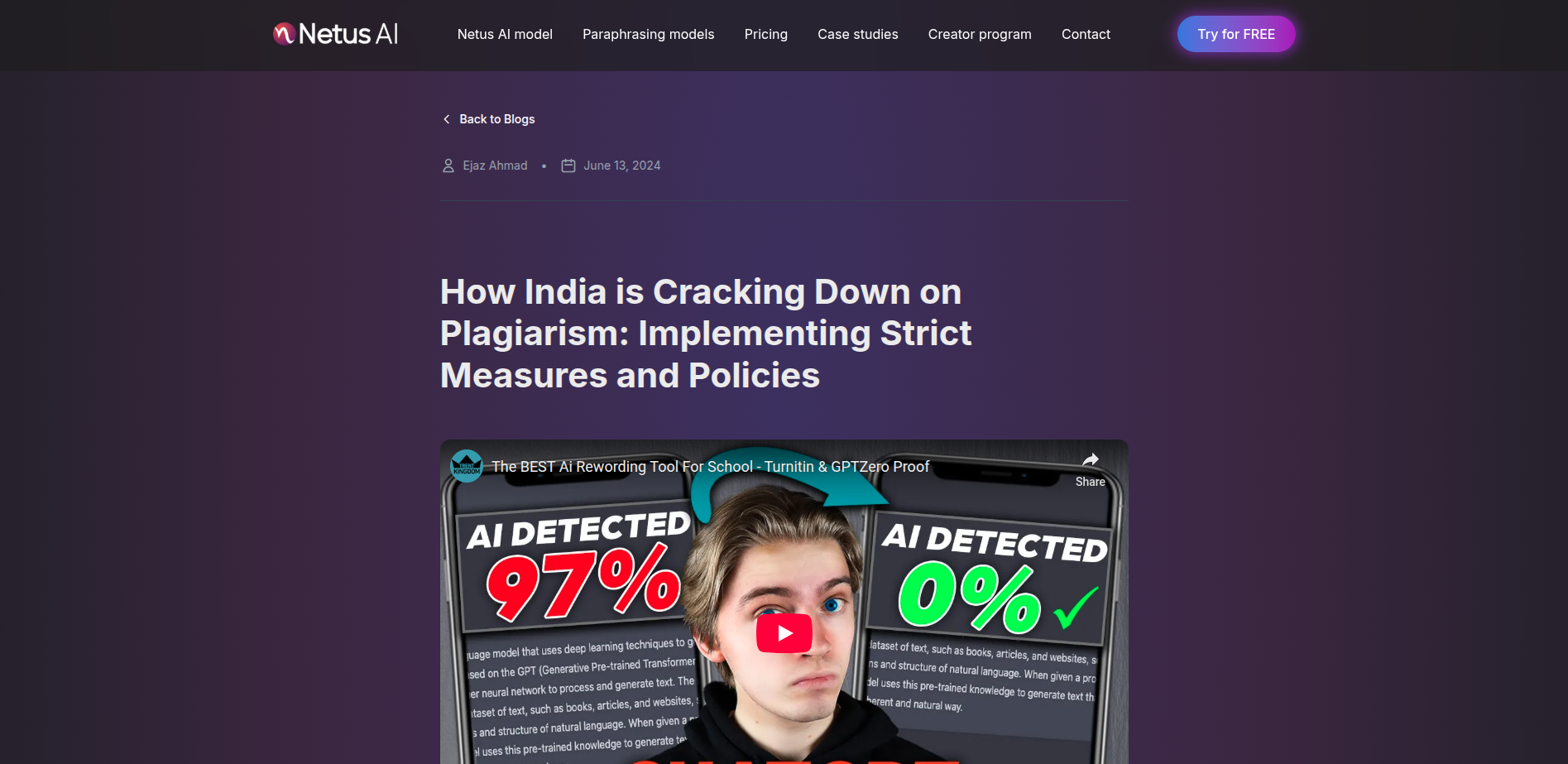How India is Cracking Down on Plagiarism: Implementing Strict Measures and Policies
Ashley Merit
Content writer and editor for Netus.AI
Table of Contents
How India Tackles Plagiarism: A Model for Other Countries
How India is Cracking Down on Plagiarism. India possesses a rich literary and cultural heritage, but like any other country, it faces the challenge of plagiarism, especially in the realm of higher education. To address this issue, India has taken various steps towards countering plagiarism and promoting academic integrity. The key measures include the installation of anti-plagiarism software, a stricter review system, and thorough scrutinization of references.
Utilizing Anti-Plagiarism Software
The digital world has made it easier for people to access and copy content from others. However, technology also offers solutions to detect and prevent plagiarism. Indian universities make use of online tools and software to determine the uniqueness of students’ research papers and assess potential plagiarism quickly and accurately. These applications, even available for free to beginners, can compare documents, PDFs, and image texts, providing an accessible option for maintaining academic integrity.
Adopting a More Rigorous Review System
Indian institutions have adopted stricter patterns for scrutinizing students’ submitted works. By engaging subject experts and utilizing advanced online tools, colleges, and universities expedite proofreading and ensure a higher level of originality in papers. Furthermore, the use of copyright and legal procedures for original creative content acts as a deterrent, discouraging unauthorized use and plagiarism.
Implementing Stringent Reference Checks
Originality in research papers is essential for evaluating academic effectiveness. However, under the pressure of deadlines, students may resort to shortcuts, leading to plagiarism. To counter this, Indian colleges and universities have implemented robust filtration processes that involve both manual proofreading and specialized online tools. This approach includes meticulous examination of the submitted work to ensure proper citation and acknowledgment of sources.
By mastering the art of citation, students can effectively avoid unintentional plagiarism and its consequences. It is also important to recognize that, in addition to directly quoting text, summarizing, paraphrasing, or borrowing ideas from other writers also constitute plagiarism, and these forms are identifiable by anti-plagiarism tools.
India’s efforts to crack down on plagiarism serve as an excellent example for other nations grappling with similar issues. Through the implementation of anti-plagiarism software, a more rigorous review system, and strict reference checks, India is upholding academic integrity and fostering a culture of originality and respect for intellectual property.
Methods for Addressing Plagiarism Issues
In an effort to combat plagiarism, certain measures have been taken by universities and institutions to ensure the originality of students’ works. One method widely used is comparing student-created content with the references cited in the academic paper, which helps faculty members distinguish between original and copied material1 .
Various easy-to-access tools and software have become popular among universities for plagiarism detection, providing time-saving solutions for both students and faculty alike2 . Benefits of these tools include compatibility with different file types such as PDFs, Word documents, and URLS3 .
Today’s generation has become increasingly reliant on readily available online content, resulting in a gradual shift from blind copying to creating original content4 . Implementing anti-plagiarism software, utilizing detection tools, and maintaining vigilant faculty members have contributed to this change5 .
It’s essential to recognize that plagiarism may not always be intentional. During an academic year, students are required to write multiple papers, often lengthy and with relatively similar topics6 . In such cases, writers may unintentionally use their previously published work in a new academic paper, which still constitutes plagiarism7. To avoid accidental plagiarism, it is advised for students to use plagiarism-checking tools and continually raise awareness about academic honesty8.
In conclusion, the combination of innovative software, diligent faculty members, and increased awareness of ethics and academic honesty plays a significant role in addressing and overcoming plagiarism issues in today’s academic and scientific communities9.
Key Insights to Consider
The prevalence of plagiarism extends beyond print materials, affecting digital content such as e-books, articles, and website blogs. Using any form of content without proper credit to the original creator constitutes theft, and this includes unauthorized use of images as well1.
Various organizations, educational institutions, publishers, and business companies have implemented stringent measures to curb unauthorized access and protect their digital data from theft. India, in particular, intends to address the issue of plagiarism by raising awareness and promoting responsible use of available content2.
In an effort to maintain ethical and responsible practices in scientific writing, researchers and professionals must strive for transparency, effective communication, and genuine learning experiences3. Such an approach will minimize scientific fraud, reinforce the foundation of research integrity, and maintain the credibility of both the individual and their work4. By adhering to these principles, researchers will not only safeguard their academic reputation but also contribute positively to the broader community.
Frequently Asked Questions
What are the legal actions against plagiarism in India?
India has introduced regulations to address plagiarism in academic institutions. Offenders can face a range of consequences depending on the severity of their case, including removal from their job or expulsion from their university1. The Indian government has also adopted a unique tiered system to determine appropriate punishments for different levels of plagiarism.
How does India’s education system identify and penalize plagiarism?
India introduced its first set of regulations to detect and punish plagiarism at universities. These regulations involve a four-tier system to categorize the severity of plagiarism cases, with each tier having its own set of penalties. Universities use plagiarism detection software to find cases of academic dishonesty.
What steps are Indian universities taking to prevent plagiarism?
Universities in India are employing measures such as anti-plagiarism software and educating students on the importance of academic integrity. Additionally, the University Grants Commission (UGC) has set guidelines for universities to follow, ensuring a consistent approach to combat plagiarism across institutions.
What are the consequences of committing plagiarism in Indian academia?
Consequences depend on the severity of the plagiarism. For first-time offenders, consequences can range from being required to submit a revised manuscript to losing their academic or research positions1. More severe cases may lead to legal actions and damage to the individual’s professional reputation.
How does India enforce intellectual property rights against plagiarism?
Intellectual property rights in India are protected by various laws, such as the Copyright Act and the Patents Act. Academic institutions also follow guidelines set by the UGC and other regulatory bodies to uphold intellectual property rights and act against plagiarism.
How is technology utilized to address academic dishonesty in India?
Technology plays a crucial role in detecting and preventing plagiarism in Indian academia. Universities use plagiarism detection software, such as Turnitin, to scan student submissions and identify instances of duplicate content1. These tools are continually improving and evolving to better detect and prevent academic dishonesty across various disciplines.
Footnotes
- https://copyleaks.com/blog/how-india-is-cracking-down-on-plagiarism ↩ ↩2 ↩3 ↩4 ↩5
- https://www.grammarly.com/blog/5-most-effective-methods-for-avoiding-plagiarism/ ↩ ↩2
- https://academiainsider.com/most-common-types-of-plagiarism-and-how-to-avoid-them/ ↩ ↩2
- https://www.academiawriting.com/blog/understanding-plagiarism-types-consequences-and-prevention/ ↩ ↩2
- https://www.scribbr.com/plagiarism/how-to-avoid-plagiarism/ ↩
- https://copyleaks.com/blog/how-india-is-cracking-down-on-plagiarism ↩
- https://www.grammarly.com/blog/5-most-effective-methods-for-avoiding-plagiarism/ ↩
- https://academiainsider.com/most-common-types-of-plagiarism-and-how-to-avoid-them/ ↩
- https://www.academiawriting.com/blog/understanding-plagiarism-types-consequences-and-prevention/ ↩
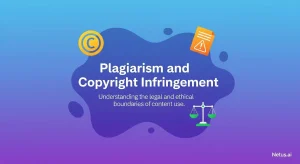
Plagiarism and copyright infringement | NetusAI
Plagiarism and copyright infringement Writers along with academic folks and students really need to steer clear of plagiarism and copyright infringement. They do this to

Tips and strategies for mobile content marketing | NetusAI
5 Tips and strategies for mobile content marketing Mobile content really matters a lot these days. Pretty much 98 percent of adults in the U.S.
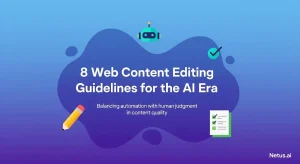
Web content editing guidelines for the AI era | NetusAI
8 Web content editing guidelines for the AI era Editing web content turns out to be pretty tough, especially when generative AI gets involved in
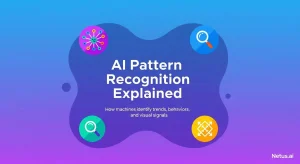
Explaining AI pattern recognition | NetusAI
AI pattern recognition explained Pattern recognition in AI really forms the backbone of what we see in artificial intelligence today. It allows machines to spot
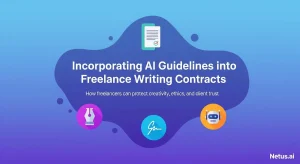
AI Guidelines in Freelance Writing Contracts | NetusAI
Incorporating AI guidelines into freelance writing contracts With AI content prevalent and ranking high on Google, freelance writing contracts must include AI guidelines. This is
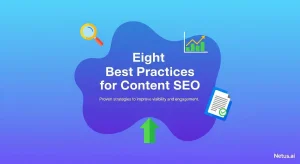
Best practices for content SEO | NetusAI
Eight best practices for content SEO Content has to show up and grab attention if it wants to do well. Content SEO takes care of

